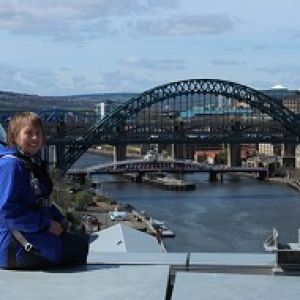Crest
Continuing as the Bellingham family crest the story in Story starts challenge Day 5
In real life, however, for DDW's Dec challenge of History, it is the coat of arms of Lord Crewe, whose legacy led to a remarkable miniature welfare state at Bamburgh. that I have really enjoyed reading more about today. I appreciate most of you wont be reading down to the bottom, but history was what was asked for so history you are getting!
DDW Dec challenge - History
Crewe's ecclesiastical career accelerated after he caught the attention of Charles II, becoming Clerk of the Closet. He became Rector of Lincoln College Oxford in 1668. He was elected Bishop of Durham in 1674. After James was overthrown in the Glorious Revolution of 1688, Crewe retreated to Durham until his death in 1721.
The estates Lord Crewe left to his charity in his will of 1721 had been acquired through purchase of property formerly belonging to the family of his wife, Dorothy Forster. Sir William Forster and his sons had been considerable landowners in Northumberland, with the lordship of the manor and castle of Bamburgh.
The Trustees owned Bamburgh Castle for more than 170 years, but faced with massive costs for restoration sold it to Lord Armstrong in 1894 for £60,000.
As soon as a man called DR John became a trustee, he proposed that the keep at Bamburgh Castle should be repaired and the court room put in order to accommodate the manorial courts which had not been held since 1748. The next step was to use the court room, when not required for legal purposes, as a school, followed by the establishment of a girls’ school.
Dr Sharp also secured agreement that all wreckage thrown up on the coast within the manor of Bamburgh would be brought to the castle and stored until it was claimed by its proper owners. He hired men to ride along the coast at night time during every great storm, to assist anyone coming on shore from shipwrecks, and to provide food and shelter for those who chose in the castle for seven days, at the expense of the trustees. Chains to drag ships onto the beach where they could be repaired, and pumps to get the water out of them, were provided. Dr Sharp paid for a signal gun to be fired regularly during every fog, with the trustees providing the gunpowder.
Dr Sharp provided two granaries in the castle and two in the village, with a windmill in the castle, selling wheat, peas, beans and barley two days a week to any poor person from within forty miles of Bamburgh, and a cheap shop was opened which sold candles, butter, pepper, pins, alum and rice specially imported from Carolina by the trustees. A set of standard weights and measures were provided at the castle so local shopkeepers could bring their own measures in for testing.
In 1772 a surgeon was appointed and a dispensary was set up, to which people were admitted free. On inheriting the library of his brother Thomas, who had been incumbent of Bamburgh, Dr Sharp sold it to the trustees for the use of the public.
Finally Dr Sharp commissioned an “unimmergible” lifeboat which was converted by Lionel Lukin and has claim to be the first inshore lifeboat, operating from Bamburgh.
- 0
- 0
- Panasonic DMC-G6
- 1/100
- f/6.3
- 42mm
- 400

Comments
Sign in or get an account to comment.


